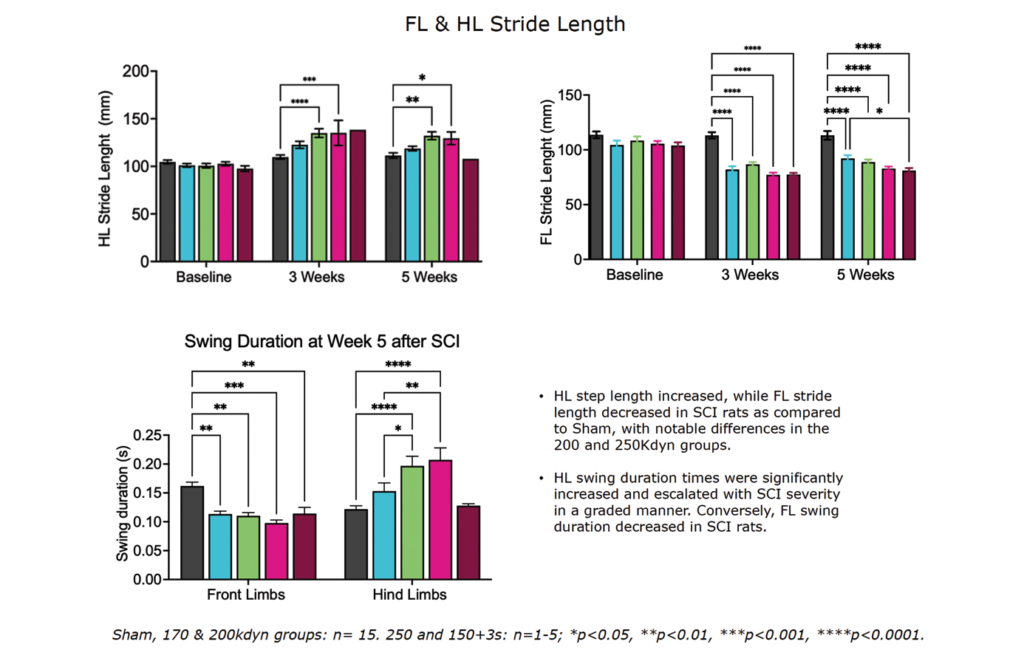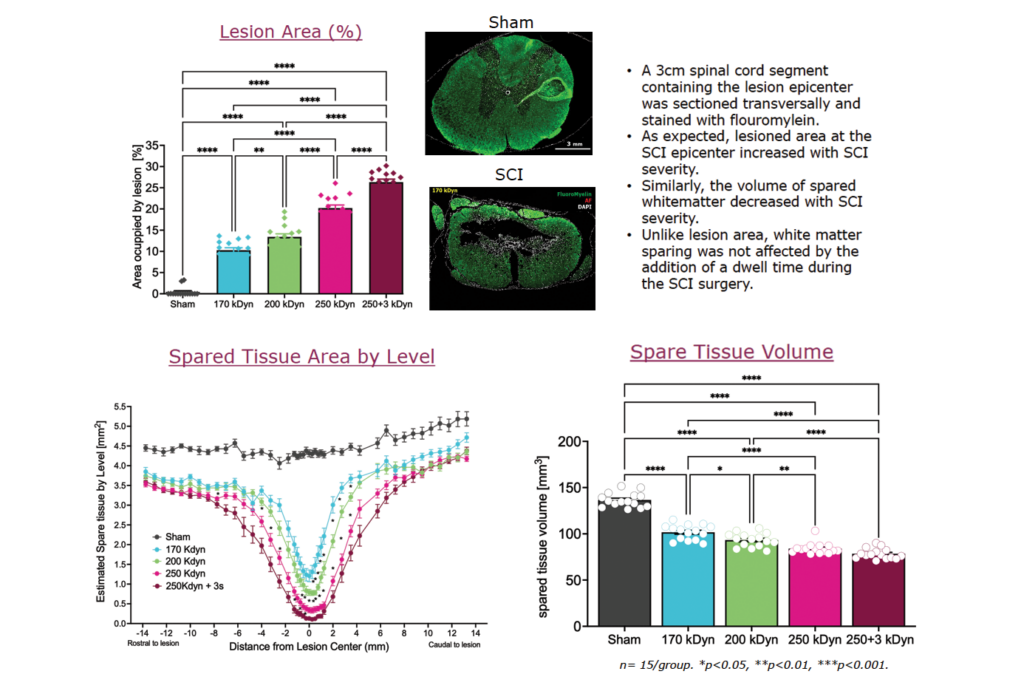PsychoGenics, in collaboration with the Christopher Reeve Foundation, has validated the first standardized thoracic (T8) contusion model for spinal cord injury (SCI) research. This groundbreaking model is reshaping how SCI therapeutics are tested, making the discovery process faster, more cost-effective, and scalable.
Introduction
- Consistent, reliable preclinical spinal cord injury (SCI) models are critical to advancing and understanding the impact of potential therapeutics.
- Establishing an SCI lab (for non-SCI academicians or industry) is a challenging and expensive endeavor, requiring specific surgical and behavioral assessment skills.
- These barriers can deter labs, industry sponsors, and investors from entering the SCI space.
- Establishing an SCI-focused contract research organization (CRO) can help address these issues by implementing standardized, consistent injury models and reliably assessing outcomes.
- This approach will ultimately decrease the cost and time needed to evaluate novel therapeutics with valid comparisons to other interventions.
- In collaboration with the Christopher & Dana Reeve Foundation and Drexel University, PsychoGenics validated a graded thoracic (T8) SCI contusion lesion model.
Results
Gross Locomotion Decreased with SCI Severity

SCI Severity Impacted Sensorimotor Function
Hindlimb Error on Horizontal Ladder

Unbiased Quantification of Features of HL
Locomotion Using NeuroCube®




Neuropathic Pain Development after Graded SCI

Evaluation of Lesion and Spared Tissue

Summary
The Psychogenics platform for thoracic SCI has the capability to run large studies, capturing many different aspects of recovery.
The data indicate that we can produce mild, moderate, and severe mid-thoracic SCI lesions, with consistent patterns of recovery reflecting lesion severity.
- Distinct locomotor profiles were produced, ranging from lack of HL weight support in the most severely lesioned cohorts to more subtle changes in walking parameters in less severely lesioned cohorts.
- The BBB score, ladder test effectively detected significant differences in locomotion among the four SCI severity cohorts as well as with Sham controls.
- The automated gait analysis provided valuable insights on finer details of locomotion produced by milder lesions.
- Distinct recovery profiles emerged depending on the modality of evoked sensory stimuli.
- Responsiveness to cold stimuli increased with SCI severity.
- Hypersensitivity to mechanical stimuli was observed in all SCI groups compared to sham, and the incidence of mechanical allodynia increased with severity. Not all SCI rats developed hypersensitivity, even the most severely injured cohorts.
The battery of behavioral assessments available are sensitive to distinguish even small differences in lesion severity. The ability to detect small but functionally significant changes will improve the drug discovery pipeline for SCI therapeutics.
Since this SCI platform encompasses a broad range of functional recovery after SCI, it increases its usability in testing a wide range of drug applications.
Methods
- Functional Recovery Assessment: Recovery was assessed over five weeks using standard locomotor tests, including the Basso, Beattie, Bresnahan locomotor rating scale (BBB; Basso, Beattie, Bresnahan 1995), the horizontal ladder test (Metz and Wishaw, 2009), and PsychoGenics’ proprietary gait analysis system, NeuroCube® (NC). Changes in mechanical and thermal sensation were evaluated using Von-Frey and Acetone tests.
- Subjects & Surgeries: Adult female Sprague Dawley rats (200-220 grams, Envigo, n=15/group) underwent laminectomy followed by T8 contusion SCI using the IH impactor with forces of 170, 200, 250 Kdyn, or 250 Kdyn with a 3-second dwell time. Measures of general health were recorded over time, including body weight, bladder function recovery, and urinary and health complications.
- Sample Collection & Immunohistochemistry: Plasma samples were collected at baseline, 1 day, 1 week, and 6 weeks post-SCI, while cerebrospinal fluid was collected at 6 weeks post-SCI only. Additionally, 3 cm sections containing the lesioned spinal cord at its center were cryoprotected, sectioned, and stained with fluoromyelin to evaluate spinal cord atrophy, lesion size, and spared white matter.
- Statistics: Swing duration, acetone test, and immunohistochemistry data were analyzed via one-way ANOVA followed by Tukey’s post-hoc test. All other data were analyzed using two-way RM ANOVA (group x time) followed by Tukey’s post-hoc test.
- Statistics: Swing duration, acetone test, and immunohistochemistry data were analyzed via one-way ANOVA followed by Tukey’s post-hoc test. All other data were analyzed using two-way RM ANOVA (group x time) followed by Tukey’s post-hoc test.
Johana Bastidas1, Megan R. Detloff2, Linda Jones3, Marco Baptista3,Karim Fouad4, Taleen Hanania1.
1 Psychogenics, Paramus, New Jersey, US. 2 Department of Neurobiology & Anatomy, Marion Murray Spinal Cord Research Center, Drexel University College of Medicine, Philadelphia, Pennsylvania, US. 3 Christopher & Dana Reeve Foundation, Short Hills, New Jersey, US. 4 University of Alberta, Department of Physical Therapy, Edmonton, Alberta, CA.
References:
Basso DM, Beattie MS, Bresnahan JC. A sensitive and reliable locomotor rating scale for open field testing in rats. J Neurotrauma 1995 Vol. 12 Issue 1 Pages 1-21. doi: 10.1089/neu.1995.12.1.
Metz GA, Whishaw IQ. The ladder rung walking task: a scoring system and its practical application. J Vis Exp 2009;28), doi:10.3791/1204.
Detloff MR, Fisher LC, Deibert RJ, Basso DM. Acute and chronic tactile sensory testing after spinal cord injury in rats. J Vis Exp. 2012 Apr 4;(62):e3247. doi: 10.3791/3247.
Support: This work was supported by the Christopher & Dana Reeve Foundation and Psychogenics.